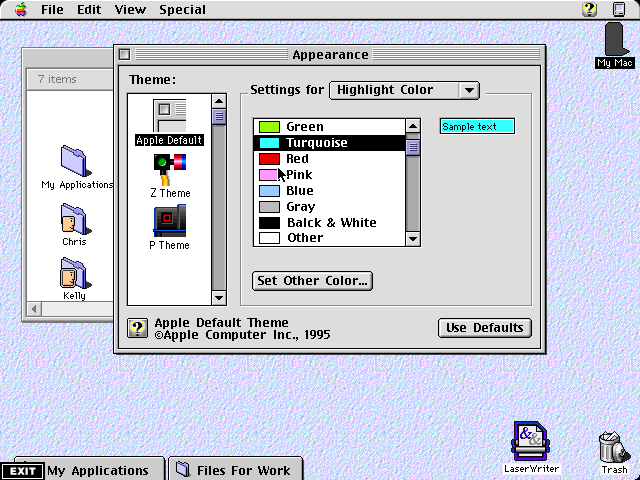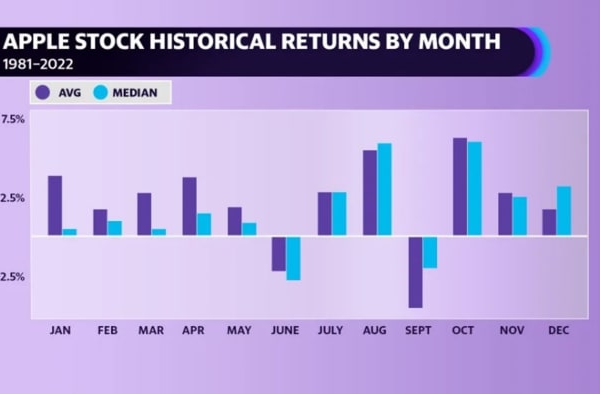Mac OS Copland: Apple’s Delayed Operating System Saga

Mac OS Copland represents a pivotal moment in the history of Mac OS, as Apple strove to innovate amidst rising competition from rival operating systems. Launched amidst great anticipation in the mid-1990s, this Apple operating system promised a wealth of new features aimed at modernizing the Macintosh experience. However, multiple delays and internal challenges ultimately hampered its release, significantly impacting its potential for success. Users eagerly awaited Copland software features like enhanced multitasking and theme customization, reflecting Apple’s commitment to personalizing the computing experience. Unfortunately, the setbacks leading to its eventual cancellation serve as a cautionary tale about the complexities of Apple software development and the importance of timely execution in technology.
The saga of Mac OS Copland illustrates a remarkable chapter in the evolution of Apple’s operating systems. Often regarded as a groundbreaking initiative, this project was Apple’s answer to the growing dominance of competitors like Windows 95. With promises of revolutionary functionalities and streamlined user experiences, Copland aimed to redefine how users interacted with their Macs. Yet, as delays mounted and resources ballooned, the dream of a unified operating system dimmed, showcasing the challenges inherent in software production. Ultimately, the impact of Mac OS Copland would lead Apple to reconsider its approach to OS design, influencing the trajectory of future innovations.
The Rise and Fall of Mac OS Copland
Mac OS Copland aimed to breathe new life into Apple’s operating system lineup during a period when competition from Windows 95 intensified. Initially announced in March 1994, it promised groundbreaking features such as a robust multitasking environment and a themeable interface, drawing users with its innovative design. However, as development dragged on, internal problems began to surface, highlighted by the departure of senior VP David C. Nagel in April 1996. This departure not only dented morale but also underscored significant management failures in steering the project forward amid unsustainable costs.
Despite the high expectations surrounding Mac OS Copland, the project faced insurmountable challenges. By late 1995, more than 500 engineers were tasked with its development, inflating its budget to $250 million. Users and developers eagerly awaited tangible progress after the beta release, but instead faced continuous delays and an ever-expanding list of features. Each delay fueled speculation about the operating system’s viability, contributing to the notion that Copland would be yet another missed opportunity for Apple to reclaim its place as a leader in the operating system arena.
Innovative Features of Mac OS Copland
Upon its announcement, Mac OS Copland was heralded as a transformative upgrade to Apple’s lineup, with features that redefined user interaction with technology. Its inclusion of a Spotlight-like live search feature positioned it ahead of its time, enabling users to find files and applications more intuitively. Moreover, Copland’s support for customizable themes allowed users to personalize their Mac experience significantly, reflecting the modern demand for customization in software design. These features showcased Apple’s commitment to enhancing user engagement and are echoed in many contemporary operating systems.
However, the ambitious vision behind Mac OS Copland led to what many termed ‘feature creep,’ where the addition of tools for multitasking and advanced user permissions expanded the project’s complexity. Apple anticipated a seamless transition for developers with a PowerPC-native architecture, but the need to support legacy applications caused delays. Copland intended to revolutionize the user experience on Macintosh computers, but it ultimately fell short, leading to years of strategic missteps that would reshape Apple’s future software development.
The Impact of Mac OS Copland on Apple’s Future
The cancellation of Mac OS Copland in 1996 is viewed as a pivotal moment in Apple’s history, marking a shift in how the company approached its operating systems. After reporting $740 million in losses, CEO Gil Amelio’s announcement that future Mac OS updates would come in a piecemeal manner, rather than a singular overhaul, demonstrated a fundamental reevaluation of their software strategy. This approach laid the groundwork for subsequent developments, ultimately leading to the acquisition of NeXT and the return of Steve Jobs.
Copland’s legacy extends beyond its features and eventual failure; it served as a cautionary tale of overambition without proper management. The insights learned from the Copland debacle influenced the development of later operating systems, including Mac OS X, which emerged under Jobs’ leadership and displayed a refined vision for Apple’s software ecosystem. The strategies adopted post-Copland illustrate how necessary it was for Apple to adapt quickly and ensure a stable, user-friendly operating system.
Mac OS Copland and Its Competitive Landscape
In the mid-1990s, Mac OS Copland faced a rapidly changing competitive landscape, dominated by Windows 95’s growing popularity. While Apple sought to innovate with features such as enhanced usability and aesthetic customization, the perception that Mac OS was behind in essential functionality hampered its reputation. Users began to notice the decreasing distance between the two operating systems, signaling a crucial moment where Apple was challenged to capitalize on its strengths and revitalize its operating system strategy effectively.
The reactions from Apple to the emergence of Windows 95 indicated a company grappling with a shift in market dynamics. The delay of Copland reflected not just internal challenges but a broader effort to reconcile Apple’s identity amidst fierce competition. The operational decisions made during this time were vital, pushing Apple to rethink its messaging and product offerings, culminating in a renewed focus on software that would lead to innovations that align closely with user expectations.
Legacy of Mac OS Copland in Modern Computing
The legacy of Mac OS Copland has resonated far beyond its canceled launch, influencing both user expectations and industry standards for modern computing. The innovative features proposed by Copland laid the groundwork for functionalities that are now commonplace in operating systems, like seamless multitasking and extensive user personalization. Even in its failure, Copland served as a catalyst for subsequent developments in Apple’s software, prompting a reflection on user-centric design that continues to endure.
This operating system not only impacted Apple’s trajectory but also set a benchmark for competing software developers. The relentless pursuit of improvement, even amid setbacks, reminded the tech community of the dynamic nature of operating system development. Today, many of the ideals proposed during the Copland era continue to influence the evolution of operating systems, as companies strive to create software that is not only powerful but also user-friendly and aesthetically pleasing.
Decline and Rebirth of Apple Software Development
The demise of Mac OS Copland marked a critical turning point for Apple, stirring significant changes in its software development philosophy. Following years of turmoil, Apple reevaluated its approach, learning vital lessons from the Copland experience. This reevaluation paved the way for a streamlined development process, which emphasized clear objectives, manageable timelines, and consistent user testimonies. The repercussions of Copland’s failure galvanized Apple to adopt a more pragmatic approach to software rollouts, one that would focus on quality over quantity.
As part of this strategy, the acquisition of NeXT, founded by Steve Jobs, was instrumental in reshaping Apple’s software landscape. The robust architecture of NeXTStep would influence the future iterations of Mac OS, leading to improvements rooted in the experiences at Copland. This shift ultimately contributed to the successful launch of Mac OS X, which sought to unify the lessons learned and establish a new standard for Apple’s software. From the ashes of Copland’s ambitious failures, Apple birthed a new era, indicative of resilience and innovation.
User Experience Innovations from Mac OS Copland
One of the most enduring aspects of Mac OS Copland was its focus on enhancing user experience through innovative design. Features introduced in the Copland era, such as its themeable interface and user-friendly multitasking capabilities, resonated with a growing demand for personalization among consumers. These early attempts at creating an intuitive user environment reflected Apple’s dedication to understanding user needs and paved the way for future developments in Mac OS.
Although users ultimately never experienced the full embodiment of Copland’s features, the ambition to create a more engaging and interactive operating system spurred foundational strategies that Apple’s software teams adopted in future releases. The focus on usability remained a priority, leading to successful iterations that emphasized fluid interaction and tailored experiences, recognizable in today’s versions of macOS. The Copland project thus became a formative influence, shaping not just technology, but how users engage with their devices.
The Strategic Importance of Mac OS Copland
Mac OS Copland’s developmental journey underscores the strategic importance of operational resilience within tech companies. The series of setbacks experienced during its creation highlighted the pitfalls of ambitious projects lacking quick responsiveness to market demands. Apple’s struggle to deliver Copland in a timely fashion informed subsequent strategies concerning product development cycles, emphasizing flexibility and adaptability to user feedback.
Ultimately, as Apple turned its attention from Copland to new software initiatives, it recognized the vital necessity of aligning its development processes with its corporate goals. This strategic pivot allowed Apple not only to recover but also to innovate further, leading to the successful introduction and sustained growth of Mac OS X. Thus, the lessons drawn from Copland played an essential role in shaping Apple’s resilient approach to software development going forward.
Reflecting on a Forgotten Chapter: The Copland Era
The Mac OS Copland project remains an intriguing yet often overlooked chapter in Apple’s storied history. Its ambitious aims and subsequent downfall serve as a reminder of the challenges inherent in software development. While its promised features and modern interface aspirations captivated many, the reality of prolonged delays and management reshuffles ultimately thwarted a landmark release. Understanding Copland’s narrative allows for deeper insights into Apple’s evolution and the making of its later successes.
As we reflect on this period, it’s crucial to acknowledge the shift that Copland initiated — fostering a culture of determined innovation amid adversity. Despite the setbacks, the lessons learned heralded a new era for Apple, prompting critical reflections on user-centric designs and sustainable development practices. For those who experienced this time at Apple, Mac OS Copland represents both a cautionary tale of ambition and a herald of future transformations.
Frequently Asked Questions
What was the significance of Mac OS Copland in Apple’s operating system history?
Mac OS Copland was a pivotal project in the history of Mac OS, aimed at modernizing Apple’s operating system to enhance its competitive edge against Windows 95. Announced in 1994, it promised groundbreaking features such as multitasking capabilities, a customizable interface, and improved internal architecture for PowerPC. Its development ultimately led to a significant reevaluation of Apple’s operating system strategy.
What features were promised with Mac OS Copland?
Mac OS Copland promised several innovative features, including a live search function similar to Spotlight, enhanced multitasking, theme customization options, and the ability for multiple users to have individual desktops. Additionally, it introduced visual enhancements and window management capabilities that resembled modern operating system interfaces, such as the Mac Dock.
Why did Mac OS Copland face repeated delays during its development?
Mac OS Copland faced delays primarily due to ambitious project scope and feature creep. After the initial beta release in 1995, Apple continued to add features, which complicated development. By 1996, the project had become excessively costly with a budget exceeding $250 million and was being worked on by over 500 engineers, which contributed to its eventual cancellation.
How did the fallout from Mac OS Copland affect Apple’s software development?
The difficulties with Mac OS Copland highlighted significant issues within Apple’s software development process, prompting the company to reassess its overall strategy. This reassessment ultimately led to the acquisition of NeXT, which brought Steve Jobs back to Apple and set the stage for the development of Mac OS X, fundamentally changing Apple’s software direction.
What was the legacy of Mac OS Copland for future Mac operating systems?
The legacy of Mac OS Copland lies in its role as a catalyst for change within Apple’s operating system strategy. The challenges faced during its development led to a comprehensive reevaluation, culminating in the design of Mac OS X, which integrated many of the intended features of Copland while ultimately achieving a more stable and user-friendly operating system.
| Date | Key Event | Impact | Features | Legacy |
|---|---|---|---|---|
| April 26, 1996 | Departure of Senior VP David C. Nagel | Fuels concerns over the delay of Mac OS Copland | Promised features like live search, multitasking, user themes | Led to reevaluation of OS strategy and acquisition of NeXT. |
| Mid-1990s | Apple’s reaction to Windows 95 | Increased urgency for an OS upgrade | Visual enhancements, PowerPC-native design | Prompted a shift in approach to OS development. |
| November 1995 | First beta release | Stalled further progress on Copland | Incorporation of ‘feature creep’ | Highlight of excessive spending and resource allocation. |
| 1996 | Announcement of project delays and subsequent cancellation | Loss of executive confidence, restructuring | Plans for a series of updates instead of full OS | Ultimately led to Jobs’ return and renewed focus on OS. |
Summary
Mac OS Copland, once hailed as a pivotal update for Apple’s operating system, faced a turbulent history that ultimately redefined Apple’s strategic approach to software development. Initially announced with promising features to recapture market share from competitors like Windows 95, the project suffered from delays and internal turmoil that hindered its progress. The departure of key figures within the company and increasing costs amplified concerns about Copland’s viability. In the end, while Mac OS Copland was never fully realized, its legacy influenced Apple’s direction and contributed to significant changes, including the eventual acquisition of NeXT and the return of Steve Jobs.
You may also like

iOS App Store Success: A Milestone in Digital Distribution


First Email from Space: The Macintosh Portable’s Legacy
Archives
Calendar
| M | T | W | T | F | S | S |
|---|---|---|---|---|---|---|
| 1 | 2 | 3 | 4 | 5 | 6 | 7 |
| 8 | 9 | 10 | 11 | 12 | 13 | 14 |
| 15 | 16 | 17 | 18 | 19 | 20 | 21 |
| 22 | 23 | 24 | 25 | 26 | 27 | 28 |
| 29 | 30 | 31 | ||||